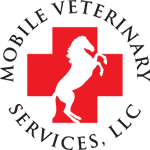 When feeding your senior horse, there are several important factors to keep in mind that can change their dietary requirements. Dental Condition Number one is the status of your horse’s teeth. You may have heard the term “expired” teeth when your veterinarian is...
When feeding your senior horse, there are several important factors to keep in mind that can change their dietary requirements. Dental Condition Number one is the status of your horse’s teeth. You may have heard the term “expired” teeth when your veterinarian is...
 At what age is a horse considered geriatric or senior? Does owning a senior horse mean that he must eat a feed labeled as a “senior” feed? As always, the answer is, it depends. Our horses are living longer lives than ever, thanks to an evolving understanding of the...
At what age is a horse considered geriatric or senior? Does owning a senior horse mean that he must eat a feed labeled as a “senior” feed? As always, the answer is, it depends. Our horses are living longer lives than ever, thanks to an evolving understanding of the...
 Historically speaking, the level of horse care has never been better than it is right now, but as our horses routinely live into their late 20s and early 30s, meeting their nutritional needs can become a challenge. With that in mind, here are some helpful tips on how...
Historically speaking, the level of horse care has never been better than it is right now, but as our horses routinely live into their late 20s and early 30s, meeting their nutritional needs can become a challenge. With that in mind, here are some helpful tips on how...






